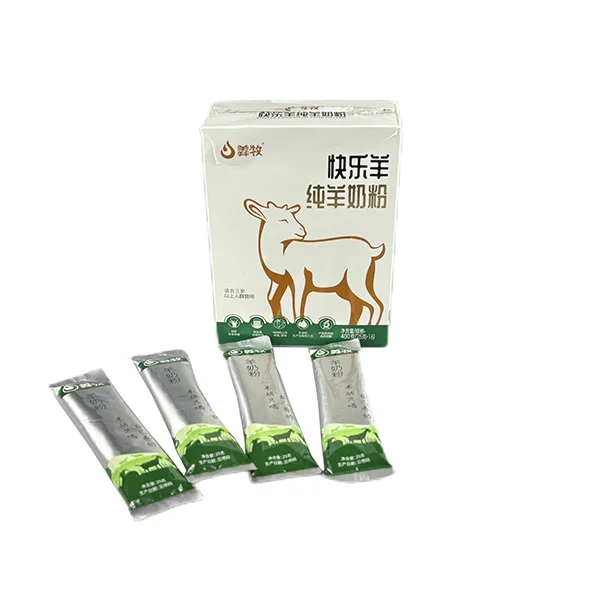- This topic is empty.
-
AuthorPosts
-
26/03/2025 at 17:33 #82056
In the highly competitive dairy industry, the quality of milk powder packaging plays a crucial role in preserving product freshness, ensuring food safety, and enhancing brand appeal. A custom high-quality milk powder packaging bag service is essential for manufacturers seeking to differentiate their products and comply with industry standards. In this blog post, as a cost effective dairy packaging bag manufacturer, Leater specializes in providing high quality commercial milk powder packaging bag customization service.
Importance of High Quality Packaging for Milk Powder
Milk powder is a delicate product that requires optimal protection from environmental factors such as moisture, oxygen, light, and contamination. Poor packaging can lead to spoilage, reduced shelf life, and potential health hazards. High-quality packaging serves multiple functions:
1. Preservation of Product Integrity: Advanced barrier properties prevent exposure to humidity and oxygen, which can cause clumping and spoilage.
2. Extended Shelf Life: Airtight and multi-layered packaging materials help maintain product freshness.
3. Regulatory Compliance: Proper labeling and materials ensure adherence to food safety regulations.
4. Enhanced Branding and Marketing: Custom designs improve shelf appeal and consumer recognition.
5. Sustainability: Eco-friendly materials cater to the growing demand for sustainable packaging solutions.
Key Features of Custom Milk Powder Packaging Bags
1. Material Selection
The choice of packaging material is crucial in determining the performance and durability of milk powder bags. Common materials include:
– Multi-layer Laminates: Typically composed of PET/AL/PE or BOPP/AL/PE for superior moisture and oxygen barrier protection.
– Kraft Paper with Inner Lining: An eco-friendly option with an additional food-grade PE or aluminum foil lining to ensure safety.
– Aluminum Foil Bags: Excellent light and moisture resistance, preventing spoilage and maintaining freshness.
– Flexible Plastic Films: Lightweight and cost-effective, often combined with resealable features.
2. Barrier Protection
Barrier properties are a critical aspect of milk powder packaging. High-barrier films prevent external contamination, moisture ingress, and oxidation. Technologies such as metalized films, EVOH (ethylene vinyl alcohol) coatings, and aluminum layers enhance the protective qualities of packaging.
3. Structural Design
The packaging bag's design must balance functionality, ease of use, and durability. Several structural elements contribute to an effective milk powder bag:
– Sealing Mechanism: Heat-sealed edges ensure airtightness, preventing leaks and contamination.
– Gusseted or Stand-up Pouches: Improve stability and storage convenience.
– Zipper Closures or One-way Degassing Valves: Enhance usability and reusability.
– Tear Notches: Allow easy opening without requiring additional tools.
4. Printing and Customization
Custom printing capabilities add value to the packaging by incorporating branding elements, regulatory information, and marketing messages. Features include:
– High-Resolution Printing: Digital, flexographic, or rotogravure printing ensures vibrant and sharp designs.
– Custom Branding and Logos: Helps reinforce brand identity and consumer trust.
– Product Information and Compliance Labels: Ensures transparency and regulatory adherence.
– UV Spot Printing and Matte/Gloss Effects: Enhances aesthetic appeal.
5. Sustainability Considerations
As environmental concerns grow, sustainable packaging solutions have become a priority. Options include:
– Biodegradable and Compostable Films: Made from plant-based materials such as PLA (polylactic acid).
– Recyclable PE and PP Bags: Reduce plastic waste and comply with circular economy initiatives.
– Reduced Material Usage: Optimizing film thickness without compromising durability.

Customization Process for Milk Powder Packaging Bags
A structured approach ensures that custom packaging meets brand and product requirements. The customization process typically involves the following steps:
1. Requirement Analysis: Understanding client needs, including material preferences, volume, and branding requirements.
2. Prototype Development: Creating sample bags for testing and evaluation.
3. Material and Printing Selection: Choosing the right combination for barrier protection and visual appeal.
4. Production and Quality Control: Ensuring consistency and adherence to industry standards.
5. Logistics and Supply Chain Management: Efficient distribution strategies to meet demand.
How to Choose Milk Powder Packaging Bag Manufacturer?
Selecting a reliable packaging service provider is crucial to ensuring high-quality, customized solutions. Key factors to consider include:
– Industry Experience: Proven track record in food-grade packaging.
– Certification and Compliance: Adherence to ISO, FDA, and other regulatory standards.
– Advanced Printing Technology: Capability to deliver high-quality custom prints.
– Sustainable Practices: Commitment to eco-friendly solutions.
– Scalability and Flexibility: Ability to accommodate different production volumes.
Conclusion
Investing in a custom high-quality milk powder packaging bag service is vital for product safety, brand differentiation, and sustainability. By selecting the right materials, ensuring superior barrier protection, and incorporating innovative designs, businesses can enhance their competitive edge in the dairy market. Partnering with a trusted packaging provider ensures seamless customization, compliance, and efficiency, ultimately leading to consumer satisfaction and brand loyalty.
http://www.leaterpack.com
Leater -
AuthorPosts
- You must be logged in to reply to this topic.


